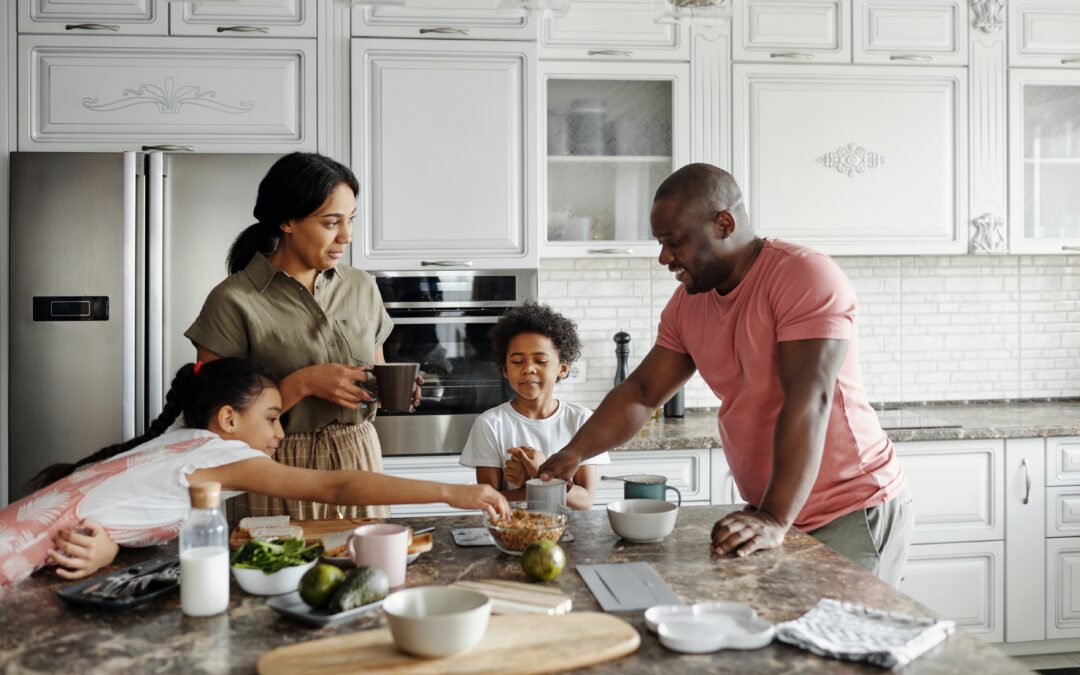When our child comes into the world and takes their first breath, we swear on our hearts that we’ll do everything in our power to protect them from the big bad outside. Though we can’t keep them from making every single mistake, we can reduce the risk of harm by kid-proofing our home. Childproofing is made easier than ever with new and innovative products available to buy and install – as well as some tried and true free methods that you can set up as soon as you finish this article. We’ll also talk about home insurance and emergency preparedness to ensure you and your family can rest (and play) easier.
Locking It Down: Childproofing Your Home Room by Room
There are several ways to childproof your home to mitigate the risk of falls, trips, choking, or even drowning – it’s all possible in the modern home. For example, in the bathroom, consider using childproof locks on toilets so they don’t fall in. Non-slip matting can prevent falls when tiles are covered in water. To prevent new walkers to access areas that may be hazardous, you can install safety gates at certain points such as stairways and corridors to hazardous areas such as the kitchen or bathroom. Electrical outlets should be dummy-plugged and cords or appliances should be off the floor and well out of reach.
You can also install oven guards to prevent babies from touching hot surfaces and keep all flammable or poisonous liquids in locked cupboards away from the reach of your child.
When changing, always use the safety strap and keep your hand on the baby if you need to reach for nappies or toiletries. Of course, keep all these away from the reach of your baby.
You can also lock most cupboards or draws in reach so children can’t get to sharp objects. Everything that they can reach they can play with – so keep things off the floor!
Sweet Dreams, Safe Dreams: Designing a Safe Sleep Sanctuary
Your paediatrician will warn you of the dangers of sudden infant death syndrome (SIDS) before you even leave the hospital – so always put your baby to sleep on their back, even for short naps. Avoid placing soft, fluffy bedding under your sleeping or napping child, such as cushions, doonas, or sheepskins.
If you are using a drop-side cot, always keep the drop-side up and locked if you are not in the room. Never leave toys in the cot and remove hanging toys such as mobiles or dreamcatchers when they are able to get on their knees or stand in the cot unassisted.
All lights and loose objects should either be out of reach or fastened to their position – don’t leave anything in the room that a baby could reasonably reach out and play with; this could be hazardous to their health. To make doubly sure, you can install baby monitors. These days, you can install cameras in rooms that come with night vision that you can check anywhere with your smartphone.
Play Safe, Play Smart: Toy Safety Tips for Every Age
To make sure your child is safe from choking, poison, or burning hazards, you need to ensure each toy you buy conforms to the minimum Australian safety standard (AS/NZS ISO 8124) – though this alone doesn’t prevent things from going wrong.
Each toy you buy should be age appropriate. If a toy has small parts that could present a choking hazard, stay away until they’re older. The same goes for toys that can break off or shoot small projectiles. If they are made of soft foam that can be torn off, this can also present a toxic choking hazard. Soft toys should be kept away from children under 12 months of age as they can obstruct breathing.
Any toy with an easily removable battery, especially those with button batteries, should be avoided. Children may confuse this with a lolly and swallow them.
Always check public notices or the ACCC recalls page for toy recalls. If you see one that is recalled, remove it from the child’s play immediately.
Safeguarding Your Sanctuary: The Importance of Home Insurance
Murphy’s Law is law for a reason: what can go wrong, will go wrong. We may be understating it, in fact – home insurance isn’t important, it’s vital. If you do not have adequate home and contents insurance, who knows what will happen if your home is damaged by extreme weather, destroyed by fire or flood, or is burgled and all of your possessions are taken. It almost gives you the shivers to think about, but it’s something you must keep in the back of your mind when creating a kid-safe (and adult safe!) home. Having a layer of protection for your home will save you for paying for repairs or other unforeseen events out of pocket. You should audit your home and possessions for an accurate valuation so you get the right amount of coverage – a back of the envelope estimate may mean you’re underinsured, which
means you won’t get as much to cover damage etc. when you claim; or over insured, which means you pay too much for a policy or features you will never use. For information on comparing policies, read this home insurance guide.
Ready for Anything: Creating a Family Emergency Preparedness Plan
Fires and floods can happen, and you need a plan for getting out of the house in case of an emergency. That means knowing where your child is at all times during the night. If they are older, you can roleplay an evacuation of the house if they hear a smoke detector – they must crawl to avoid smoke and meet at a pre-agreed gathering point. You can do this every year or so as a fun activity (kids can enjoy it, despite what it’s for!) You may also want to prepare an overnight bag with clothes and supplies just in case you cannot return to your home for any reason.
Creating a kid safe home takes a bit of preparation – but it’s worth it if it creates an environment where your children are free to roam and play without risk. Following safety tips, installing safety devices, playing with safe toys, getting the right home insurance, and having an emergency plan in place can all contribute to having a kid-safe home.




